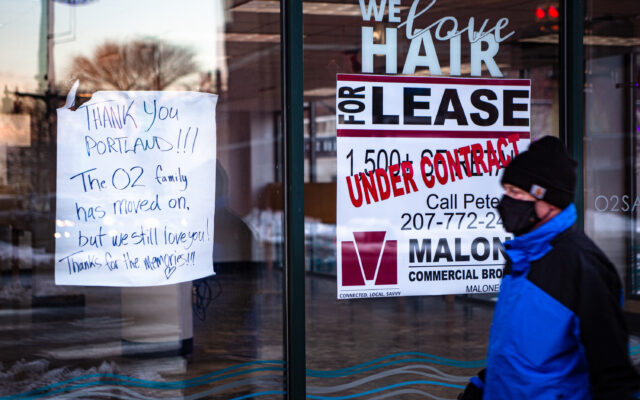
Lower vaccination rates in rural Maine are lengthening a COVID-19 plateau
By Caitlin Andrews, Bangor Daily News Staff
Vaccination gaps in rural areas in Maine are among the major factors sustaining a recent COVID-19 plateau that is not likely to wane soon, experts say.
New cases in Maine have remained consistent as the surge driven by the delta variant has begun to drop in other parts of the country. The state has the ninth-highest increase in case rates over the last 14 days, according to a New York Times tracker, despite the fifth-highest vaccination rate among states.
Rural areas with lower vaccination rates have taken the brunt of the surge. Somerset, Franklin and Oxford counties — three of the four least-vaccinated counties in Maine — have seen the highest rates of new cases during that period, with rates between 82 to 101 new cases per 100,000 residents. Cumberland County, where 80 percent of eligible residents have gotten their final doses, only saw 31 new cases per 100,000 people in the same period.
Those pockets will continue to sustain the virus, public health experts said. The recent trouble suggests that Maine’s early ability to weather surges better than other states may be a drawback in beating back this surge because relatively few people compared with other states have contracted COVID-19 at any time during the pandemic.
“What that means is that in those rural unvaccinated parts of the state where there is no background immunity when the virus gets introduced, it is metaphorically and almost actually like gasoline with fire,” Maine Center for Disease Control and Prevention Director Nirav Shah told Maine Public on Monday. “It just tears through with no immunity to stop it.”
A joint COVID-19 modeling project from Yale, Harvard and Stanford researchers projects that less than 33 percent of Mainers have ever contracted the virus. Only Hawaii and Puerto Rico have smaller percentages. In North Dakota, the state with the highest case rate throughout the pandemic, 68 percent of people have likely had COVID-19. Early success in containing the virus still leaves Maine with the third-lowest case rate among states throughout the pandemic.
The challenge here now lies in the unevenness of the state’s vaccination rates, which allows the virus to smolder in those communities after the variant was slow to arrive in Maine, Dr. Noah Nesin, the chief medical officer of Penobscot Community Health Center, said.
“It is clear this surge is going to have a broad shoulder on the downside and not a nice bell curve like others,” he said. “It’s going to take a while to abate.”
This could present greater dangers for people with underlying medical conditions, even if they are vaccinated, said Dr. Gibson Parrish, a Yarmouth epidemiologist who worked for the U.S. CDC. While the recent authorization of vaccines for young children and mandates could boost rates, states will need to close vaccination gaps quickly to slow the surge, he said.
“I think there’s a sense that we’re in better shape than we are,” he said.